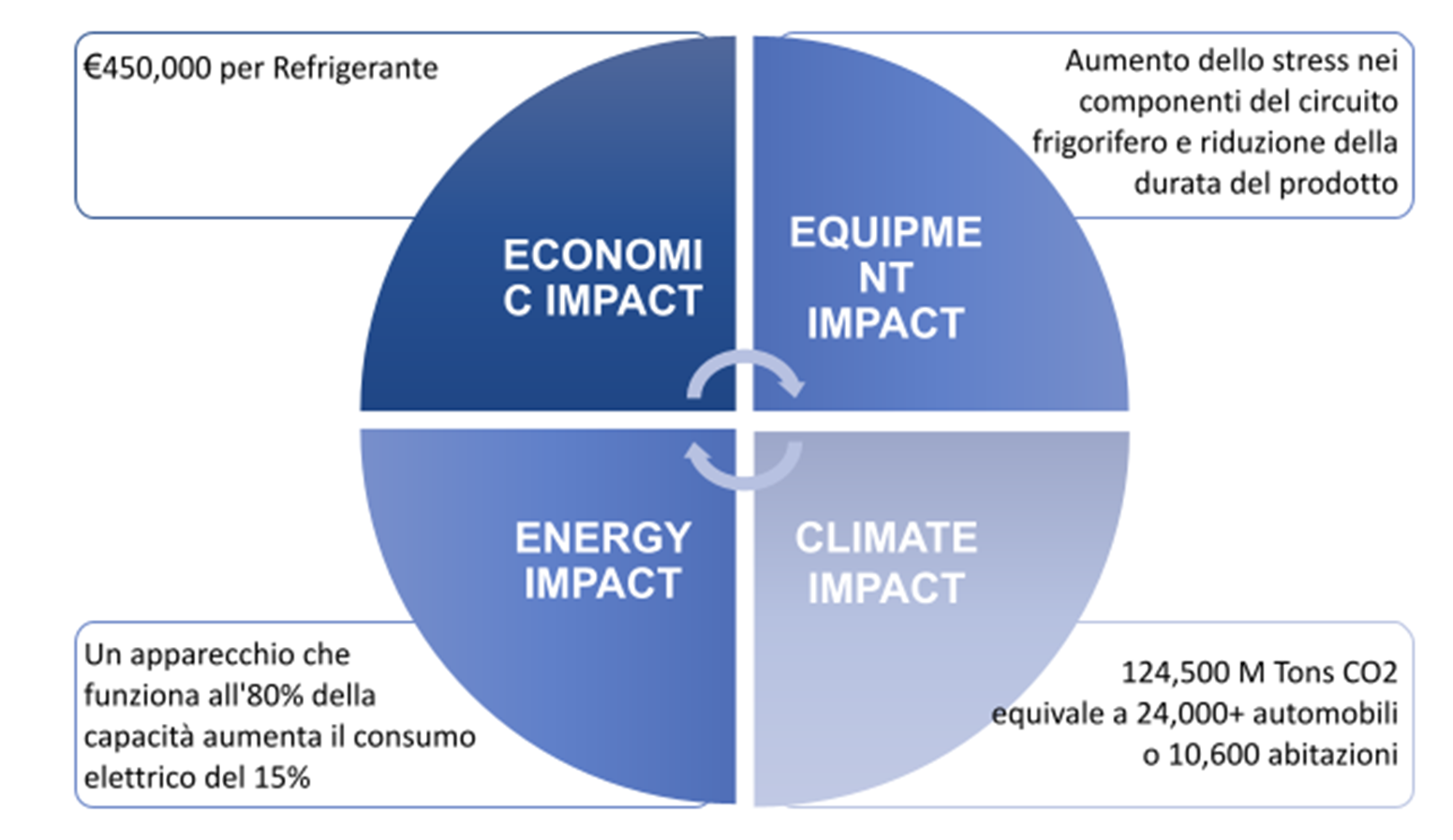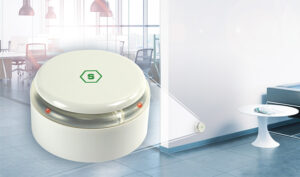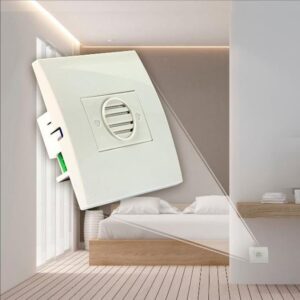Detecting refrigerant gases with gas detectors allows proper monitoring of the operation of cold generation systems, whether air conditioning or refrigeration.
It is important to know how to detect refrigerant gases and that any leaks from such equipment are monitored consistently and on time. Detecting refrigerant gases has a twofold purpose: on the one hand, it protects people and property from the dangers of refrigerant gas leaks; on the other hand, it allows the efficient operation of equipment to be ascertained and thus contributes to the reduction of operating costs of installations.
The different refrigerant gases and the dangers of leakage
There are numerous refrigerant gases on the market. Some of them are older and their use is currently no longer authorised due to the potential danger to the ozone layer. Other, more recently developed refrigerant gases, on the other hand, have low GWP and a resulting flammability level that needs to be monitored.
Briefly, refrigerant gases can be grouped into:
- Older production, so-called “freons”, CFCs and HCFCs (R12, R123, R22, etc.)
- More recent, HFO, (R32, R410a, R1234yf, etc.), with a moderate flammability risk
- Natural (CO2, NH3, hydrocarbons such as Propane or Methane)
Each of them can be used for the production of cold, and any leaks would pose real risks to people and plant safety. Risks from possible leaks are also related to the environment and the ecosystem.
The dangers of refrigerant gas leaks on which it is necessary to focus are therefore the following:
- People’s health: when a gas leak occurs, it progressively replaces the air we breathe. In closed, unventilated rooms, the level of gas concentration can increase significantly and deplete the breathable air. In extreme cases, leading to asphyxiation and death.
- Fire and explosion: Some refrigerant gases such as ammonia, propane and A2L are by their nature flammable. Their release corresponds to a real risk of fire and explosion if the gas comes into contact with ignition sources.
These scenarios make clear the need for concrete, continuous and reliable detection of potential losses..
Refrigerant Gas and Leak Detection Obligations
National and international regulations govern the use of refrigerant gases, and aim to control and reduce their environmental impact. Consequently, leakage control of these gases is also mandatory in many countries nowadays.
Compliance is undoubtedly facilitated by the use of refrigerant gas detection systems for equipment operation, as well as periodic checks for regulatory leaks.
If one adds to this the potential flammability of the new refrigerant gases, it goes without saying that leakage control falls under the regulations already in place for the protection of hazardous areas.
As far as public or workplaces are concerned, the main benefit of such monitoring lies in the increased safety for staff and visitors, who will thus avoid being exposed to gas leaks.
Practical example
Within a supermarket, detectors placed in the vicinity of refrigerated shelves, cold rooms or refrigerated warehouses would make it possible to intercept any refrigerant leaks. This also helps to monitor and protect the freshness and integrity of goods.
In addition, any leakage of refrigerant gases does not only cause a risk to people and environmental damage, but also economic damage. In fact, a proper monitoring system reduces operating costs and increases safety.
The economic impact of refrigerant gas leaks
All refrigeration equipment is designed to work optimally with a precise refrigerant charge. Loss of refrigerant is not an exceptional event, but a rather common occurrence. Loss of refrigerant can cause an interruption in service or cold production. As well as malfunctions and excessive energy consumption, resulting in reduced productivity or even a general shutdown of the affected device.
Conversely, whether the fault is at the level of the air-conditioning system or the cold system in the warehouse, the use of a refrigerant gas detection system will allow prompt action to be taken and avoid even more costly losses..
This solution also produces a reduction in the cost of refilling refrigerant gas. This is because it allows immediate control of leaks and brings a real economic gain. In fact, it should be borne in mind that estimates indicate that around 20%-25% of the refrigerant gas used in supermarkets is lost each year precisely because of gas leaks from the systems.
From the point of view of reducing energy consumption, taking over refrigerant gases also proves to be a winning solution. A gas leak leads to an increase in energy consumption estimated at between 10% and 40%. This generates a significant cost, especially for large-scale retail activities. Large air-conditioned spaces such as stations or airports or large refrigeration plants can also have high costs.
Let us look at a theoretical example calculated on a supermarket chain:
Annual calculation
- 100 supermarkets
- Refrigerant gas R-404a
- 1,500 Kg per Site
- 20% Estimated loss (vs. 0%)
- Loss of 300 Kg/year/site
- Average cost 15€/Kg for R-404a
In practical terms, we are looking at an economic loss of 450,000 Euros for the supermarket chain!

Refrigerant Gas Detectors

Various measuring and monitoring devices are now available to verify the proper operation of refrigeration equipment. This means that the detection of gas leaks is now guaranteed in all areas of the refrigeration industry by suitable detectors.
The installation of a refrigerant gas detection system provides constant monitoring of any refrigeration plant. The installation of stationary gas detectors also fulfils all obligations under refrigerant gas regulations..
Refrigerant leakage detection is performed by one or more gas detectors connected to a control centre, which acquires signals from the detectors and activates alarms and controls such as ventilation systems and remote alarm signals.

The SMART 3H LITE detectors offered by Sensitron provide an effective solution: they can be used as stand-alone devices. That is, they do not require a connection to the control unit. SMART3-H LITE detectors have an integrated acoustic and visual alarm signal to warn of danger.
Even environments very different from industry can benefit from these advantages. An air-conditioned indoor space in a residential context, an office or a hotel room can be equipped with these devices, which come in models that are dimensionally discreet, aesthetically pleasing and easy to use.
In this area, Sensitron offers the SMART3H-FM detector: flush-mounted, it provides constant monitoring and triggers an alarm when a refrigerant leak occurs.
Follow us on Linkedin.
